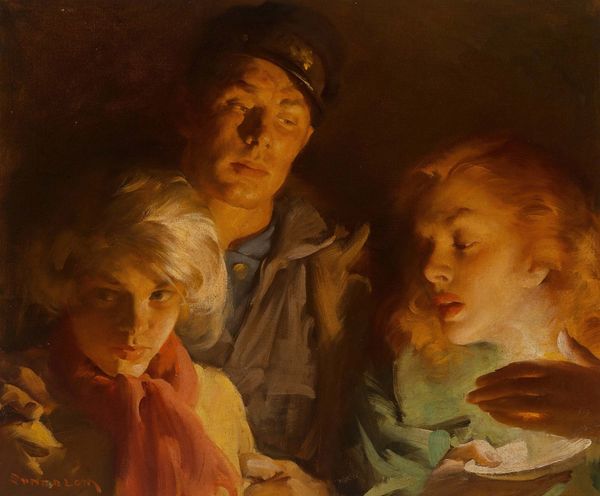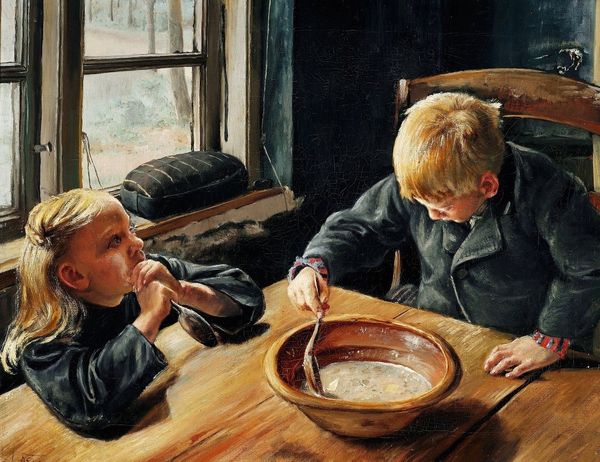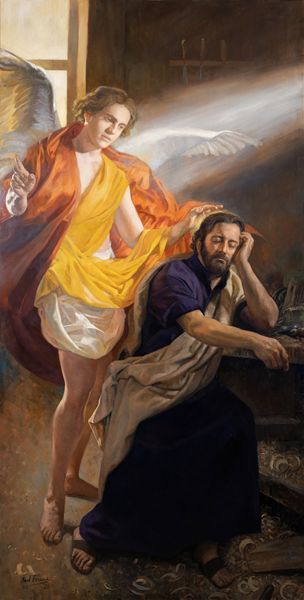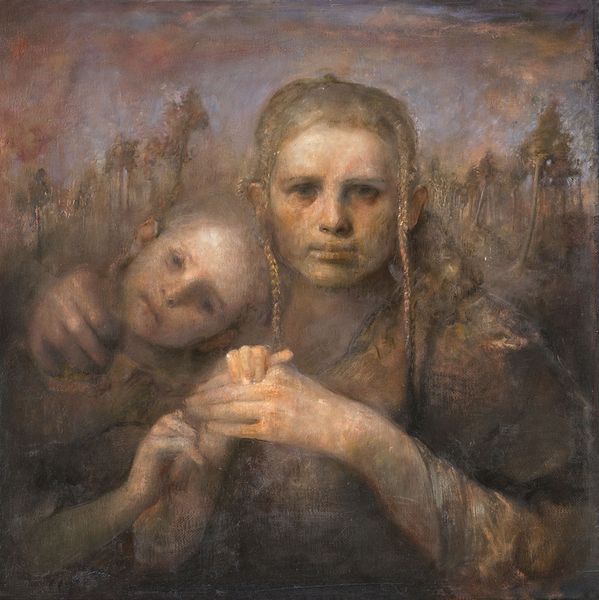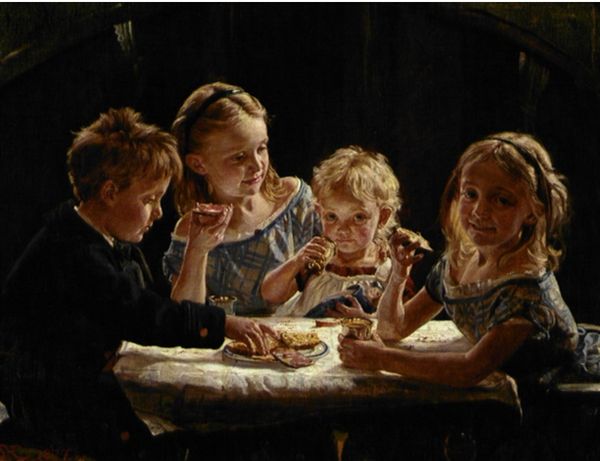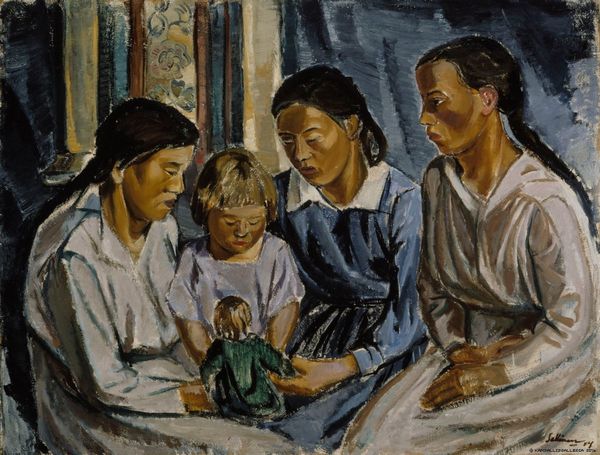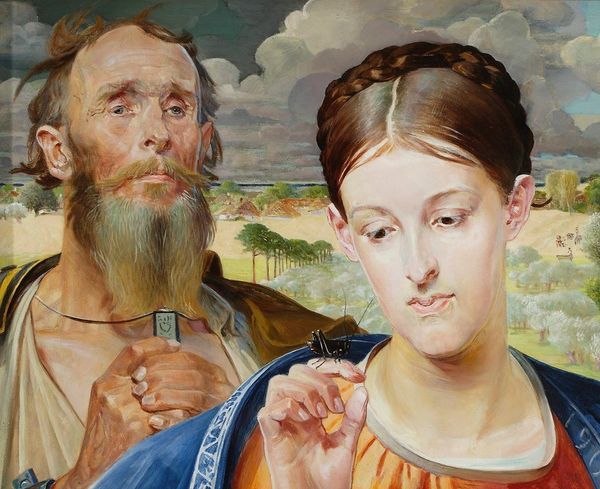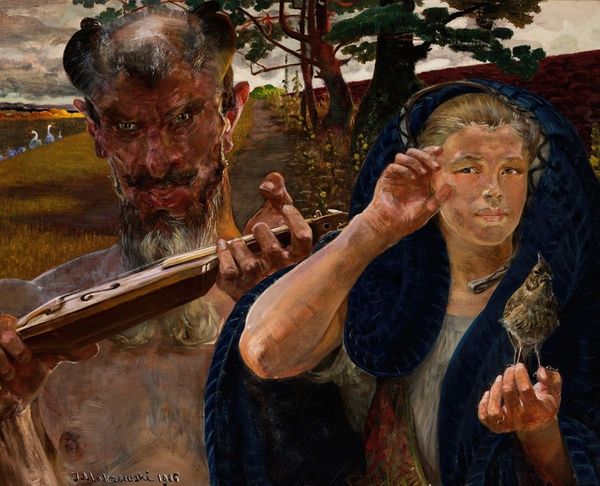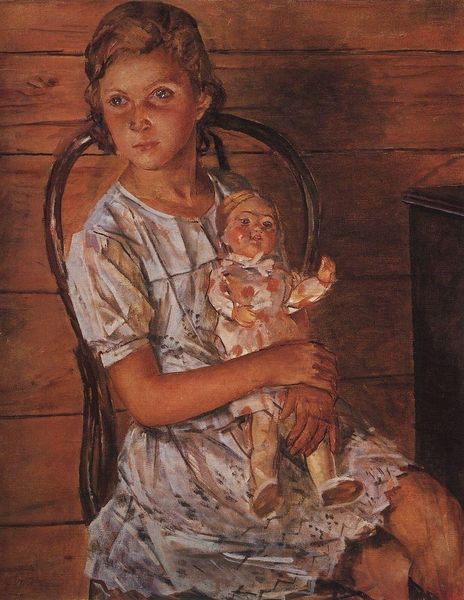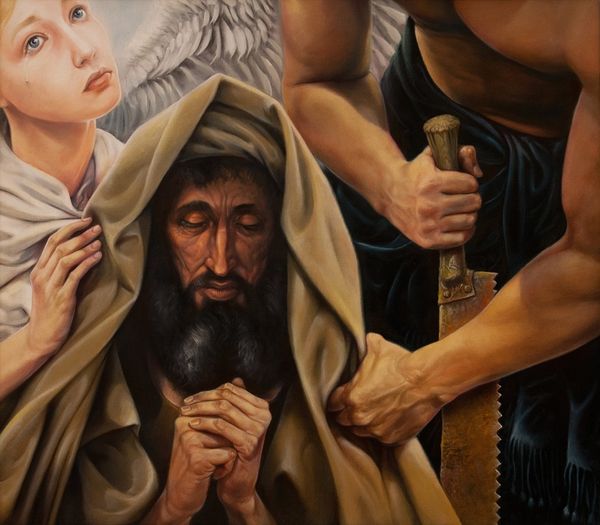
Copyright: Public Domain: Artvee
Editor: Here we have Jacek Malczewski’s 1923 oil painting, "Annunciation." The lighting creates a peaceful domesticity. There's almost a sense of being in a Vermeer painting with a slightly haunting energy due to the artist's palette and the figures. How do you read this composition? Curator: I appreciate your sensitivity to light in the Vermeer style. However, notice how Malczewski eschews clear, classical forms. Instead, the subjects exist in a space defined more by color and tonal relations than linear perspective. Observe the impasto in the application of pigment; each brushstroke adds textural and chromatic complexity. Does this not alter the perception of narrative? Editor: Yes, I see how the visible brushstrokes affect that. It almost feels unfinished, raw, and heightens that feeling that I mentioned. Curator: Precisely. Consider how this raw treatment plays against the subject matter of Annunciation. A traditional, heavily laden symbolism. He actively undermines a clean art-historical reading. Can the form change the underlying mythic subject? Editor: I'm curious to further study the relation of form and symbolic representation in Malczewski's works now, thinking of this dialogue. Thanks for your time! Curator: Indeed. The disruption between form and content creates a dynamic tension and ultimately changes the reception and interpretation of the traditional biblical painting.
Comments
No comments
Be the first to comment and join the conversation on the ultimate creative platform.
